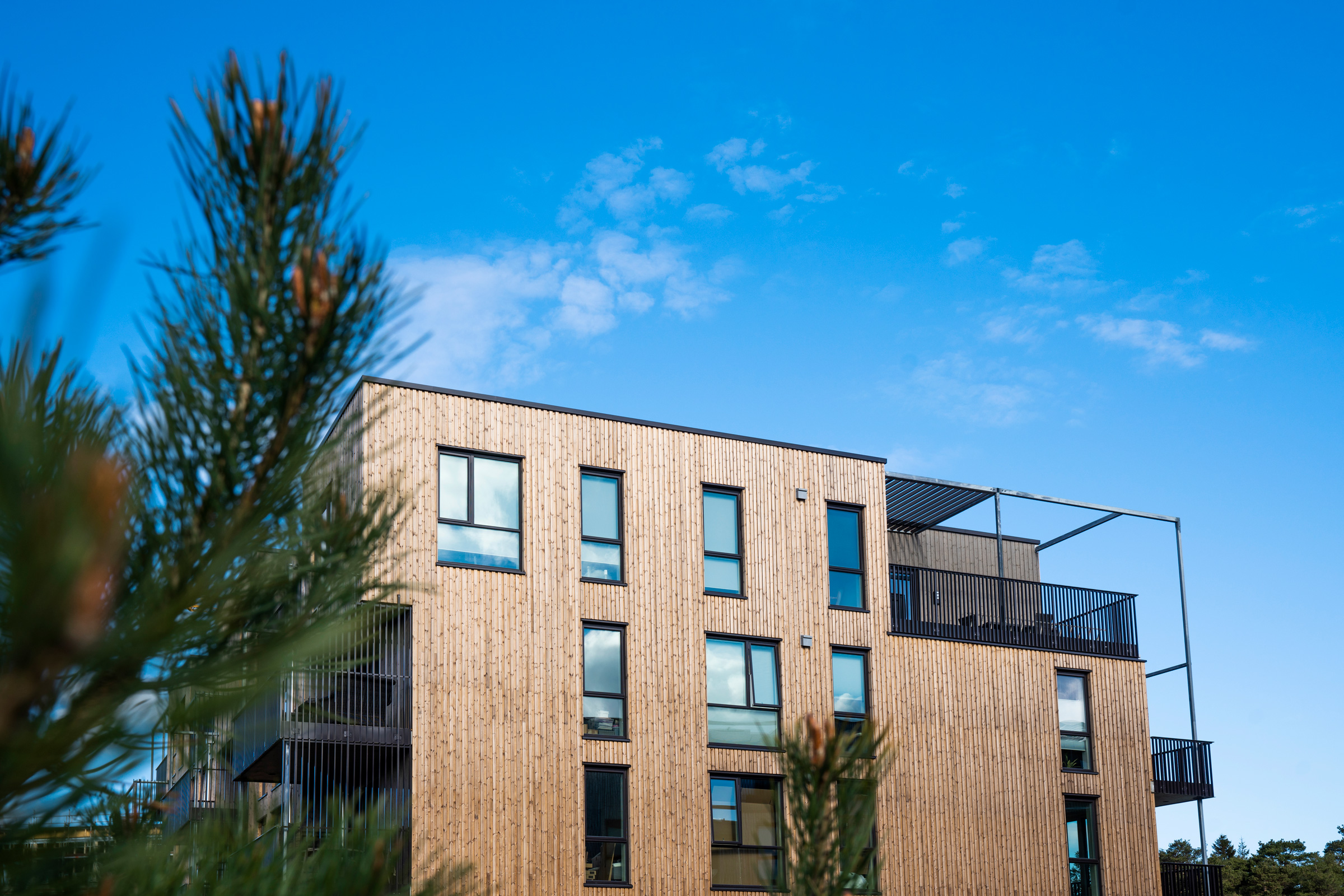Story at a glance:
- Thermally modified wood is moving into the mainstream because it’s durable, sustainable, and attractive.
- Architects say thermally modified wood opens up new possibilities for a wood like pine that otherwise would not be appropriate for exterior applications.
- Exterior cladding is one of the most common applications for thermally modified wood, given its durability.
Not long ago thermally modified wood was nearly unheard of. But in the last decade more companies have developed sophisticated new systems to treat lumber, producing all-natural products that are as durable as many other options without cutting down exotic forests. And with an expanding variety of textures and colors available, more architects are specifying thermally modified wood products in their designs.
“Our firm tends to gravitate more toward natural materials because there is a certain quality and aesthetic I think is timeless,” says Michael Hara, an architect at Minneapolis-based firm HGA Architects and Engineers. “But until recently the range of natural materials you could use and get good extended lifetimes with was a little bit limited.”
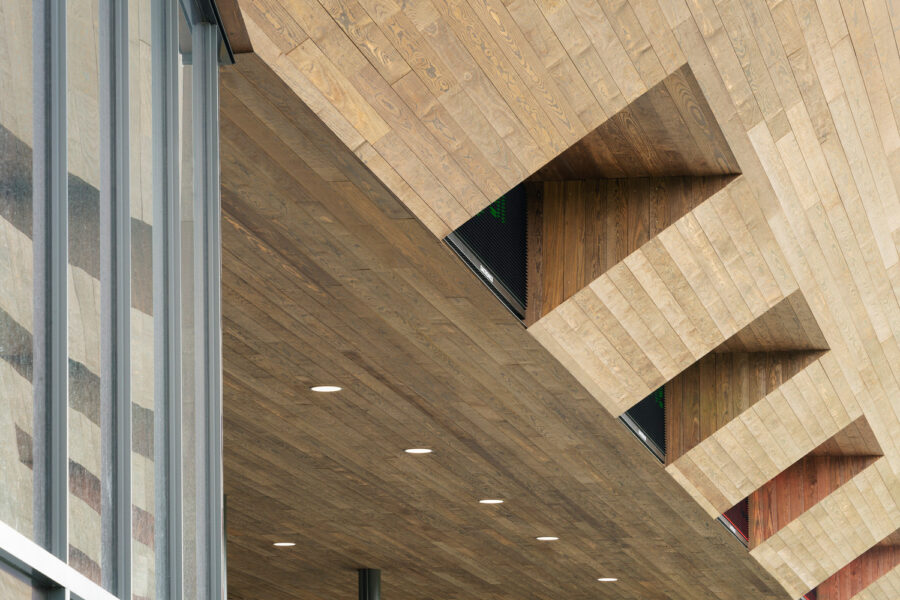
HGA recently completed the Derby Line Port of Entry in Vermont for US Customs and Border Protection. The crossing is clad in thermally modified wood, which will weather over time to echo the look of Vermont’s covered bridges. Photo by Gary Hall
HGA recently completed the Derby Line Port of Entry in Vermont for US Customs and Border Protection—cladding doorways, insets, and the drive-through canopy in thermally modified Southern yellow pine. The wood will weather from a light brown to a soft gray over time to recall Vermont’s covered bridges and vernacular architecture, the firm says, offering a warm welcome to the United States.
“What we find exciting is that thermally modified wood opens up a new range of possibilities for a wood like pine that otherwise would not be appropriate for exterior applications,” Hara says. “It’s fast-growing, relatively inexpensive, and extremely durable.”
Strength Across Species
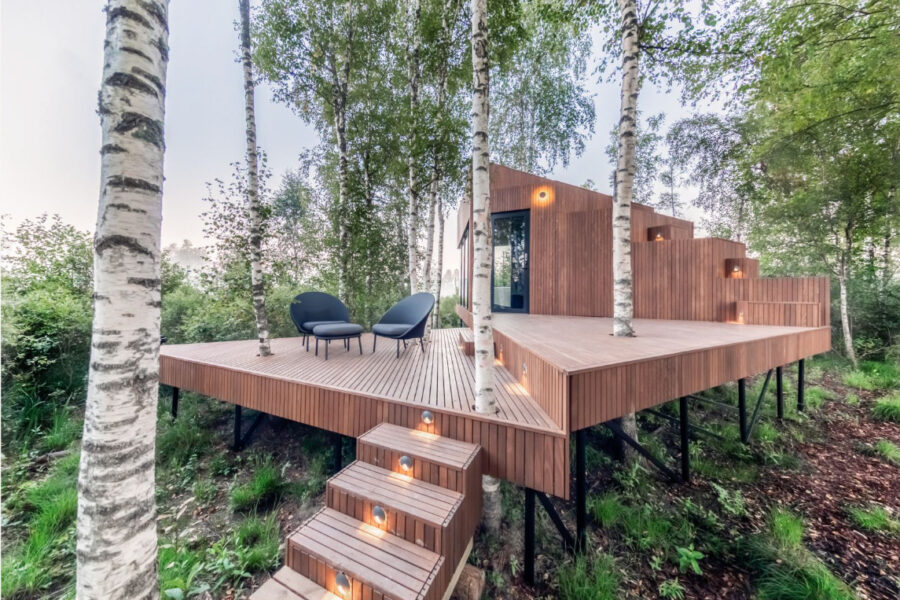
Photo courtesy of Thermory USA
Thermal modification alters carbohydrate chains in the wood’s cellular structure to make it more impervious to water and rot. “We reduce the sugar content of the wood, eliminating the food source for mold and fungus and things that deteriorate and rot wood over time,” says Kevin DeMars, principal of Thermory USA, one of the first companies to offer modified wood products to US builders. “The wood becomes very stable.”
DeMars and partner Mark Challinor “got creative” to find new applications for Thermory’s technology in 2012. Seeing the popularity of exotic hardwoods, they thought architects might enjoy options that were just as durable, yet sustainable. And by treating familiar Northern Hemisphere species such as ash, red oak, Scots pine, and spruce with steam and heat, the company is able to offer materials that have the strength of tropical or manufactured woods without deforestation, chemicals, or plastic additives.
The result? “A product that is as close to perfect as it gets for the planet,” DeMars says. “Hardwood forests in North America and in Europe are some of the best-managed in the world, so we’re using a naturally renewable product to create a solution.”
Exteriors and More
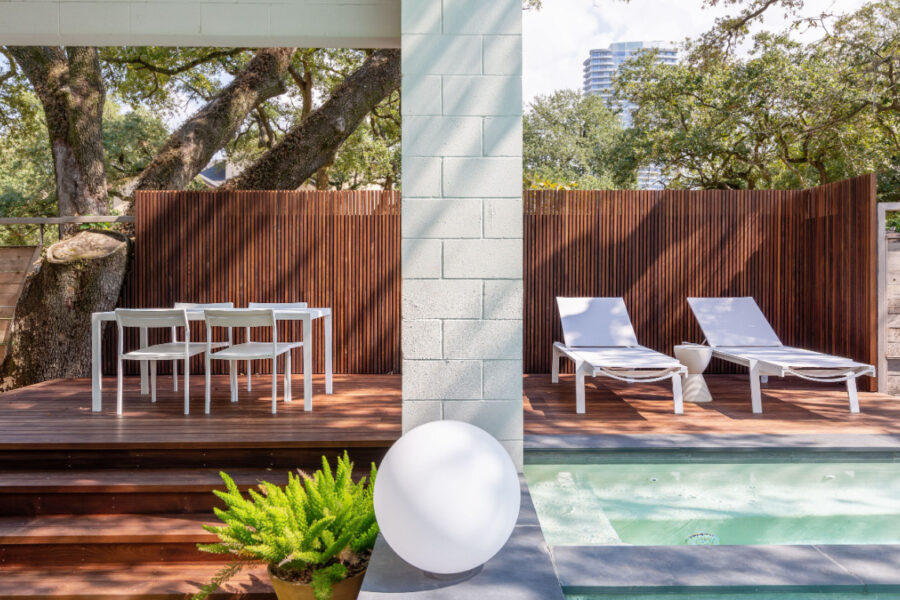
Photo courtesy of Thermory USA
Exterior cladding is one of the most common applications for thermally modified wood, given its durability. “It’s where you get the most bang for your buck,” Hara says. “I also think it’s great for soffits and ceilings and things that hang outside. It has opened a whole new range of aesthetic possibilities; you get a spectrum of colors and textures, and a different range of wood species.”
Not all modified wood is created equally, though. If it isn’t the product of a careful scientific process and quality control, DeMars says, workability can suffer. In addition, most companies specify that thermally modified wood products be installed with a rain screen that allows the wood to breathe on both sides for optimal longevity. “It adds some labor and some cost, but it also makes it a much more robust and much more durable system,” Hara says.
“One of the things we find really exciting about it from a sustainability perspective is that you can take really-fast growing woods and compare them to things like Cumaru,” Hara adds. “That comes from exotic locations, and its sustainability and even the trade of it is maybe a little bit questionable. Thermally modified wood can offer a really great product without having to harvest trees that take 150 years to get to maturity.”
While it can be more expensive at times, there are many advantages, Hara says. “A lot of options are prefinished, and that makes field labor much, much less expensive. The lifespan is quite long, and so in terms of installation and replacement costs, it’s much better than a lot of traditional woods. And it’s lightweight; ebony and other common exterior woods weigh three or four times as much and are really hard to cut.”
Building Awareness
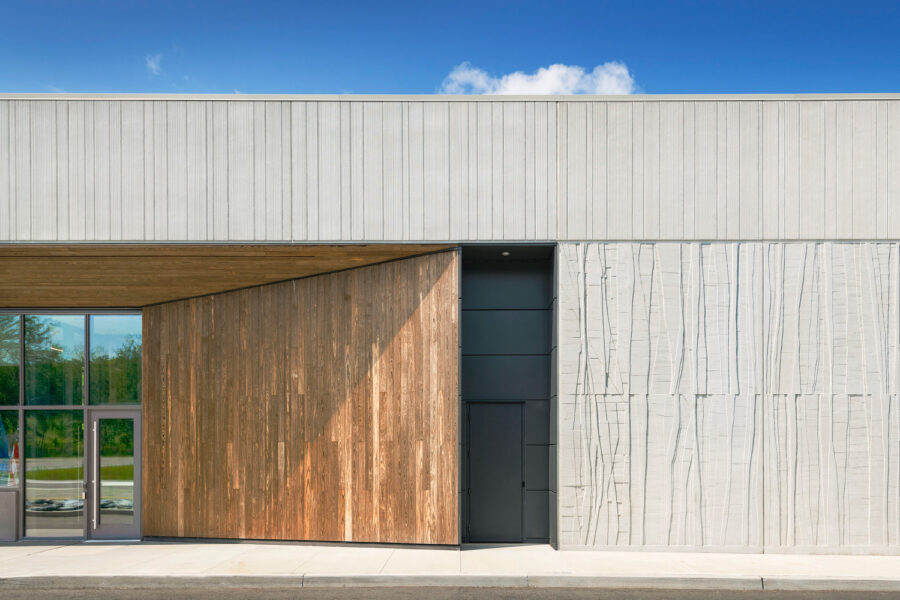
The HGA-designed Port of Entry in Vermont features thermally modified wood. Photo by Gary Hall
Designing with thermally modified wood has gotten more accessible as more companies start to experiment with the process. Thermory USA has added new woods in multiple sizes, colors, and textures for exteriors and interiors, for example, guaranteeing them to last 25 years with proper installation, cleaning and oiling, and other companies are following suit.
A trend toward biophilic design is accelerating apace. Hospital projects are specifying natural wood because it can help patients heal, and schools say it helps keep kids calm. “It’s a pretty remarkable thing,” DeMars says. “Putting yourself in a room with real raw wood can have a profound effect on your well-being mentally and physically. As architects start to use wood to create biophilic designs, more will join, and it will quickly reach the masses.”
Putting yourself in a room with real raw wood can have a profound effect on your well-being mentally and physically.
Hara says natural materials never really go out of style. “Wood has a beauty and a warmth to it,” he says. “When we use natural materials, there’s something about the quality I think lends itself to good environments and good architecture.”
Previously seen as mostly an option for high-end clients who demand sustainability, thermally modified wood is attracting new adherents every day. “As we do more of these projects, people are becoming more aware of the benefits,” Hara says. “It’s a really exciting technology. It’s the best of both worlds in terms of durability and natural quality. It bolsters sustainable work and ties in the ideas of forest, product and material management.”
“Architects are the people who push manufacturers to come up with creative solutions that make their products better,” DeMars says. “And I like to think that we’re a company that aligns with that logic — a company that creates cool products with a lot of care and thought into the aesthetic and the performance.”

